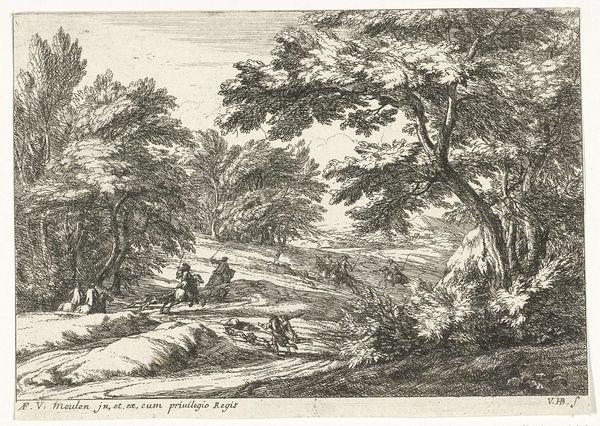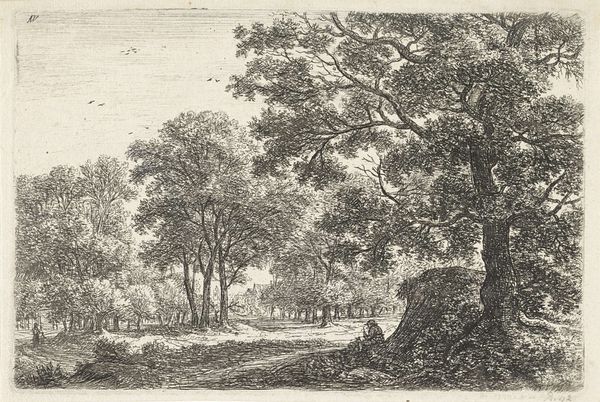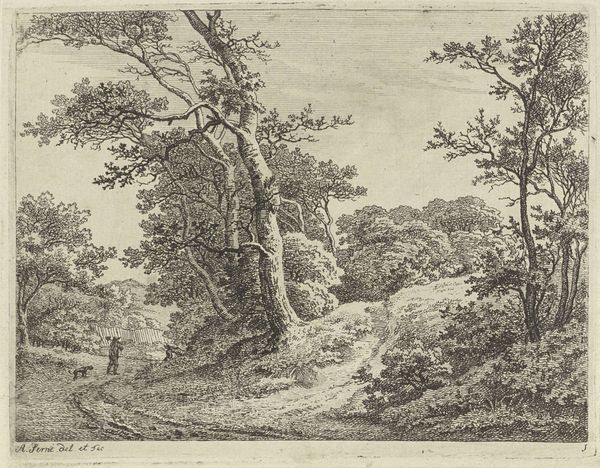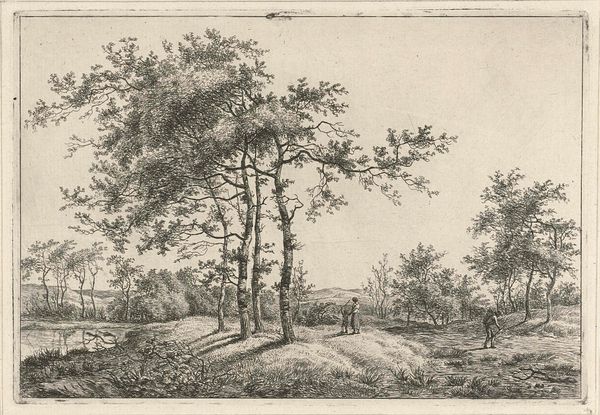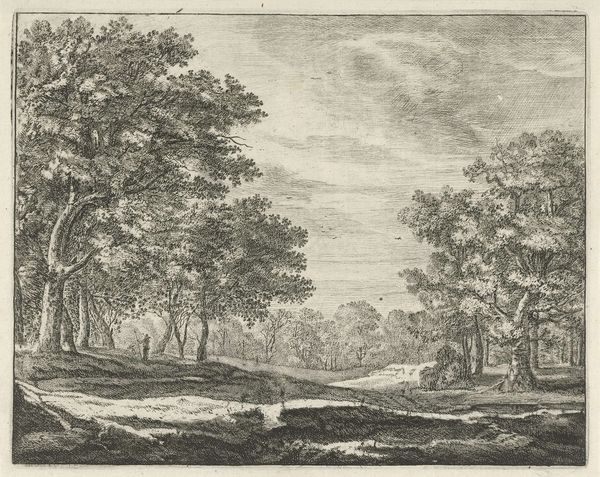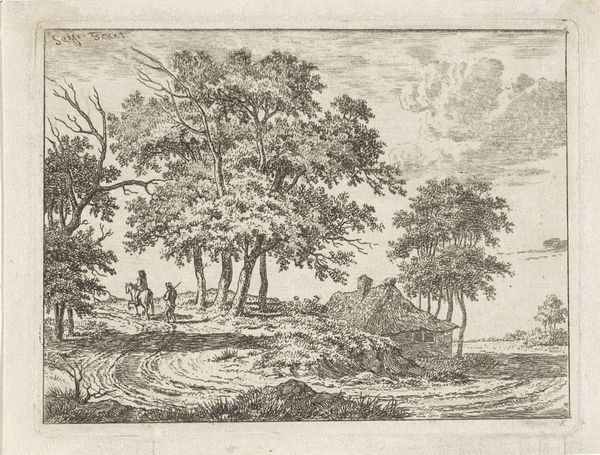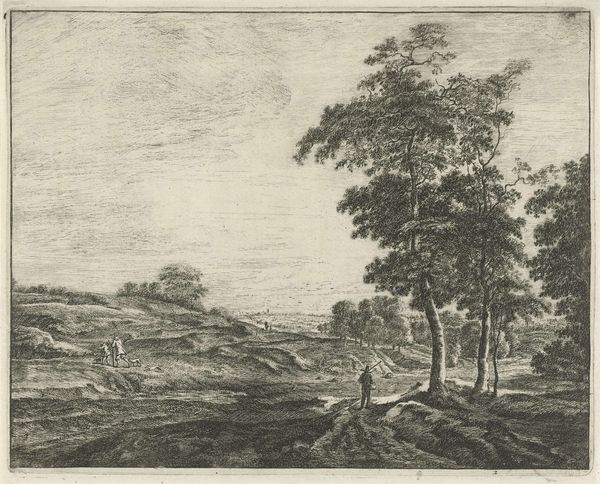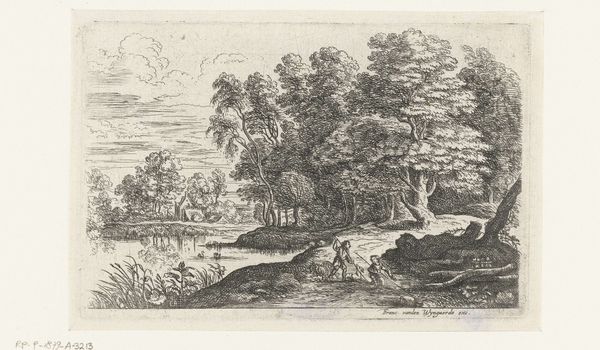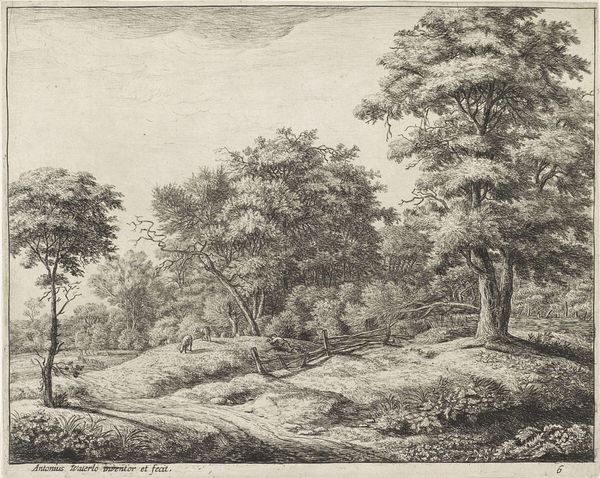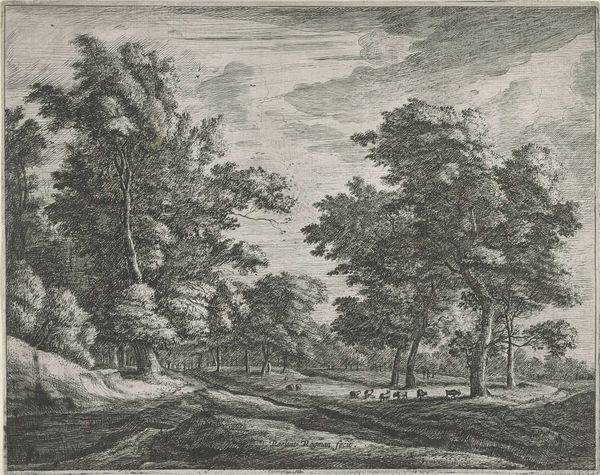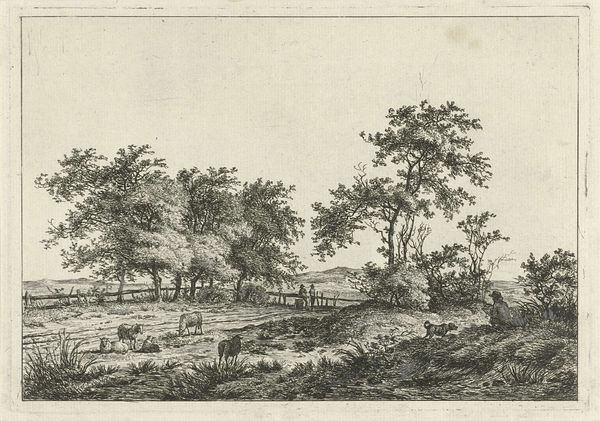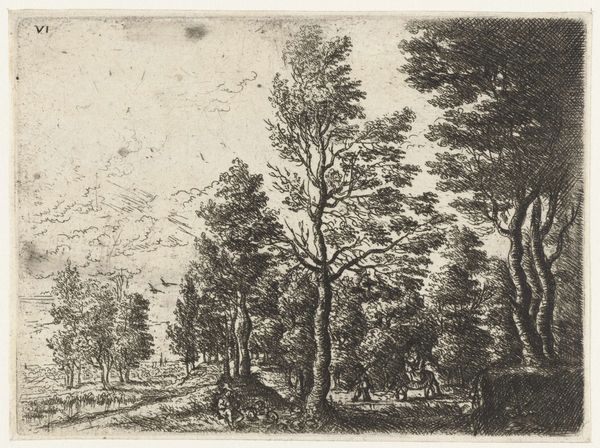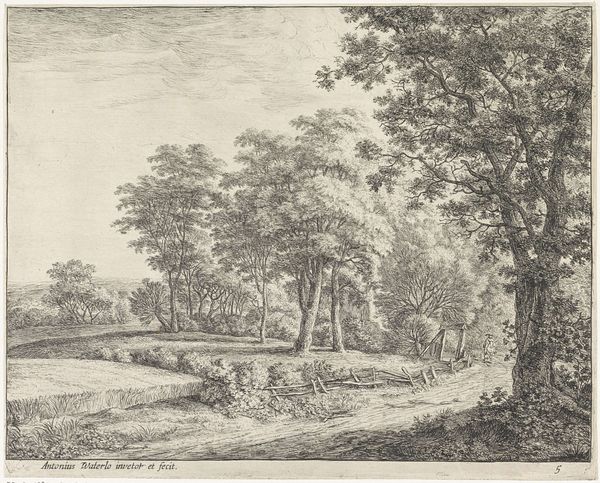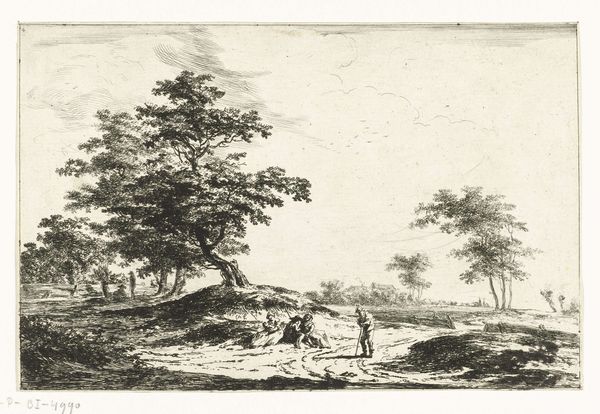
etching
#
dutch-golden-age
#
etching
#
landscape
#
forest
#
genre-painting
Dimensions: height 210 mm, width 262 mm
Copyright: Rijks Museum: Open Domain
Editor: We are looking at "Path on the Edge of the Haagse Bos", an etching made sometime between 1637 and 1742, attributed to Roelant Roghman, held at the Rijksmuseum. There’s a tranquil mood here, and a real contrast between the dark trees on the left and the open sky on the right. What can you tell me about this landscape as an etching, particularly in relation to the social context of its production? Curator: Roghman’s choice of etching is interesting in itself. Consider its relatively democratic nature compared to, say, painting for a wealthy patron. Etchings allowed for wider distribution, opening up landscapes like this to a burgeoning middle class interested in representations of their local environment. The labor involved is also telling—etching demands a careful, repetitive process, which aligns with the industriousness valued in Dutch society at the time. Editor: So, the medium itself speaks to the intended audience and its values? Curator: Precisely. Look closely at the lines he uses; the etching process necessitates a specific kind of mark-making, almost like a crafted, repeatable gesture. This print could be viewed as a commodity representing a newly appreciated Dutch landscape but it’s also a material object, created through very specific and replicable processes. How do you think the landscape itself plays into that? Editor: It seems to normalize everyday scenes for ordinary people. Before, it was mostly portraits or grand religious allegories... Curator: Indeed! And note the relatively unadorned presentation of nature, even the humble treatment of labor, with just the small figures, rather than any heroic or moralistic grandeur. This focus reinforces an emergent national identity, shaped as much by materiality as by grand narratives. We can view landscape's increasing importance within genre paintings through Roghman's decision to immortalize this simple "Path". Editor: I’ve never thought about the connection between artistic processes and the bigger social picture that explicitly! Thank you for providing such a wonderful perspective. Curator: My pleasure. Seeing the means of production informs how we understand art and its place in society—the materials always matter.
Comments
No comments
Be the first to comment and join the conversation on the ultimate creative platform.
